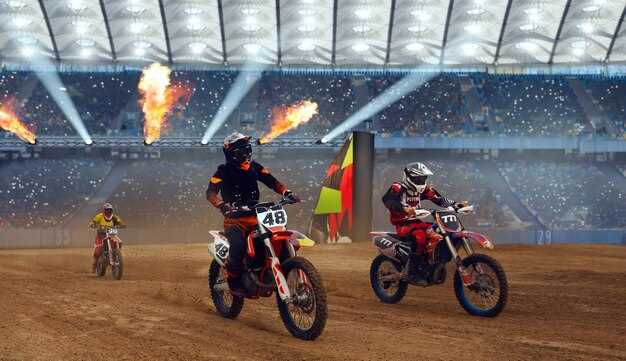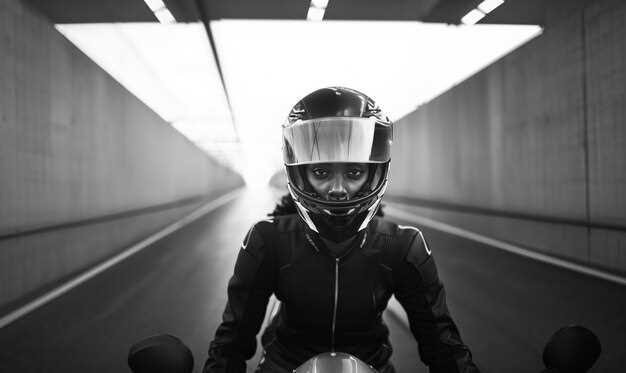
Track riding is an exhilarating experience that combines speed, skill, and strategy. However, even the most seasoned riders can make mistakes that may compromise their performance or, worse, lead to accidents. Understanding these common errors is vital for both novice and experienced riders who aim to enhance their track skills while ensuring their safety.
One of the principal mistakes track riders often make is misjudging their positioning in relation to other participants. In a high-speed environment where precision is key, maintaining a proper distance from other riders is essential. Not giving enough space can result in abrupt maneuvers that increase the risk of collisions.
Another critical area where riders frequently fall short is their understanding of track etiquette. Failure to communicate intentions with fellow riders can lead to confusion and dangerous situations. Cueing your moves with clear signals not only ensures your safety but also fosters a cooperative environment on the track.
Additionally, many riders neglect the importance of tire pressure and bike maintenance, which can significantly impact performance. Inadequate tire pressure can lead to reduced grip, while poorly maintained bikes can suffer from mechanical failures during crucial moments. Taking the time to check your equipment before each ride can help prevent these issues from arising and allow you to focus entirely on your performance.
Poor Gear Selection for Conditions

Choosing the right gear is crucial for track riders to optimize performance and ensure safety. Poor gear selection can lead to various issues, including loss of speed, reduced control, and increased risk of accidents.
Several factors should be considered when selecting gears. Weather conditions, track surface, and personal riding style all play significant roles. For example, riding on wet or slippery tracks requires a different approach than riding on dry, grippy surfaces. In wet conditions, riders should opt for gears that provide better traction and allow for controlled acceleration.
Additionally, terrain variations can greatly affect gear choice. On steep inclines, lower gears are often necessary to maintain momentum and avoid stalling, while higher gears are more suitable for flat stretches to maximize speed. Ignoring these variations can lead to inefficient performance and fatigue.
Furthermore, personal strength and riding experience should influence gear selection. An inexperienced rider may struggle with higher gears, leading to potential loss of control. It is essential to recognize one’s limits and adjust gear accordingly.
In summary, poor gear selection can severely hinder track performance and pose safety risks. Riders must assess conditions, track characteristics, and their own capabilities to make informed decisions regarding gear choices.
Neglecting Pre-Ride Equipment Checks

Before embarking on a ride, conducting thorough pre-ride equipment checks is essential for both safety and performance. Riders often overlook this crucial step, which can lead to severe consequences, including equipment failure or accidents. A structured checklist can help avoid such pitfalls.
First and foremost, inspect your tires for proper inflation and tread wear. Under-inflated or worn-out tires can compromise grip and handling, especially under demanding conditions. Next, examine the brakes to ensure they are responsive. This includes checking the brake pads for wear and ensuring that the brake cables function smoothly.
Additionally, don’t ignore the drivetrain. A clean and lubricated chain, along with properly adjusted gears, enhances efficiency and prevents unnecessary wear. Verify that all bolts and components are securely fastened, particularly those on the handlebars, stem, and seat post.
Furthermore, check your lights and reflectors if you plan to ride in low-light conditions. Functional visibility equipment is critical for avoiding accidents. Ensure that your helmet is correctly adjusted and in good condition to provide necessary protection.
Lastly, take a moment to test the suspension system if your bike is equipped with one. Properly functioning suspension contributes to a smoother ride and better control over rough terrain. Implementing these checks not only ensures a safer ride but also enhances the overall cycling experience.
Inadequate Riding Position During Turns
Maintaining the correct riding position is crucial for stability and control during turns. A common error among track riders is an inadequate body position, which can lead to loss of traction and balance. Riders often lean too far inside or outside when cornering, disrupting weight distribution. This can cause the bike to slide or tip over, especially at high speeds.
Engaging your core muscles helps stabilize your body and keeps you centered over the bike. When entering a turn, shift your weight toward the inside of the corner. This positioning lowers the center of gravity and enhances grip, allowing for smoother transitions through curves. Ensure that your knees are tucked in, and your elbows are slightly bent, facilitating better control of the handlebars.
Additionally, avoid sitting too far back on the saddle during turns. A forward position helps maintain proper weight balance on the front wheel, increasing steering responsiveness. Remember to keep your head up and eyes focused on the exit of the turn, as this will guide your trajectory and instill confidence in your maneuvering.
Regular practice adapting your riding position will help develop muscle memory, leading to improved technique over time. Riders should also video their practice sessions to identify any flaws in body positioning during turns. Making small adjustments can significantly enhance your overall performance and safety on the track.

